15 Appendix O: Indigenous Rights Based Framework Timeline — TRC, UNDRIP & Reports
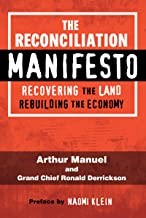
This timeline borrows from The Reconciliation Manifesto: Recovering the Land, Rebuilding the Economy (pp. 48–56) by Arthur Manuel and Grand Chief Ronald Derrickson, published by James Lorimer and Company Ltd. ISBN: 9781459409668
Back to Indigenous Inclusion in Employment
May 8, 2006
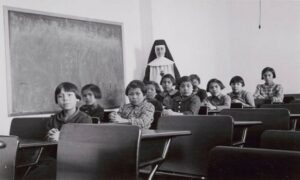
Indian Residential Schools Settlement (IRSSA)
The Indian Residential Schools Settlement (IRSSA) was the result of the Truth and Reconciliation Commission of Canada’s call for inquiry into the residential school system, which was a network of boarding (and day) schools run by Christian churches and funded by the Department of Indian Affairs (Government of Canada). The last residential school operated by the Canadian government, Gordon Indian Residential School (“George Gordon First Nation,” 2022) in Saskatchewan (2023), was closed in 1996. The total compensation granted was $3.126 billion, with over 86,000 people entitled to compensation. Indigenous children were forcibly removed from their homes, and the Indian Act (2023) mandated attendance with goals to assimilate Indigenous children. The schools perpetrated sexual abuse, physical abuse, and general harm, and between 3,200 and 6,000 students died while attending these schools—a testament to the harms perpetrated on those who attended. The resulting intergenerational trauma has impacted Indigenous Peoples—from those who attended to their children and grandchildren. The network of schools has been described as a system of oppression and cultural genocide, and over 150,000 children attended across Canada. Children who attended were separated from their homes, subject to abuse, experienced cultural loss, and lost their traditional languages.
- Timeline of Residential Schools (CBC News, 2008)
- A History of Residential Schools (CBC News, 2021)
- Assembly of First Nations (2022) Indian Residential Schools
- Wikipedia: The Indian Act (“Indian Act,” n.d.)
- Winnipeg Public Library (n.d.): Residential Schools
September 13, 2007
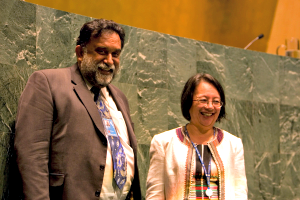
UN General Assembly Enacts UNDRIP
The United Nations Declaration on the Rights of Indigenous Peoples (UNDRIP) was adopted by the General Assembly on Thursday, September 13, 2007, with a majority of 144 states in favour, 4 votes against (Australia, Canada, New Zealand, and the United States), and 11 abstentions (Azerbaijan, Bangladesh, Bhutan, Burundi, Colombia, Georgia, Kenya, Nigeria, Russian Federation, Samoa, and Ukraine).
June 11, 2008

Prime Minister Steven Harper’s Apology
The Steven Harper Apology to Indian Residential School Survivors (Crown-Indigenous Relations and Northern Affairs Canada, 2010), which took place a year after the Indian Residential School Settlement, recognizes that the absence of an apology had been an impediment to healing and reconciliation for Indigenous Peoples and started off an era in of Truth and Reconciliation.
The official apology was instrumental in bringing better awareness of the need for Reconciliation and education of Canadians on the dark history of the Canadian government’s oppressive practices that have impacted the health and well-being of Indigenous Peoples.
A snippet from the official apology:
A cornerstone of the Settlement Agreement is the Indian Residential Schools Truth and Reconciliation Commission. This Commission presents a unique opportunity to educate all Canadians on the Indian Residential Schools system. It will be a positive step in forging a new relationship between Aboriginal peoples and other Canadians, a relationship based on the knowledge of our shared history, a respect for each other and a desire to move forward together with a renewed understanding that strong families, strong communities and vibrant cultures and traditions will contribute to a stronger Canada for all of us. (Crown-Indigenous Relations and Northern Affairs Canada, 2010)
Watch this video, Canadian Federal Government Apology to First Nations [Video of Harper Apology, 8:29 min], by School District 27 Residential Schools and Reconciliation (2014).
If you are using a printed copy, you can scan the QR code with your digital device to go directly to the video: Canadian Federal Government Apology to First Nations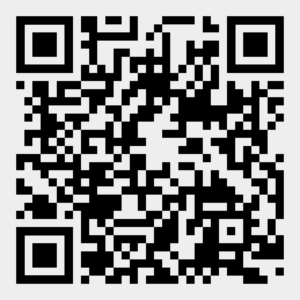
November 12, 2010
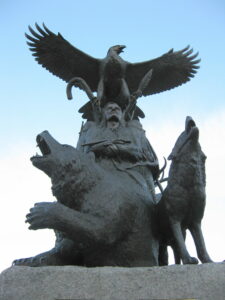
Canada Endorses UNDRIP
“Today, Canada joins other countries in supporting the United Nations Declaration on the Rights of Indigenous Peoples. In doing so, Canada reaffirms its commitment to promoting and protecting the rights of Indigenous peoples at home and abroad.
The Government of Canada would like to acknowledge the Aboriginal men and women who played an important role in the development of this Declaration.
The Declaration is an aspirational document which speaks to the individual and collective rights of Indigenous peoples, taking into account their specific cultural, social and economic circumstances.
Although the Declaration is a non-legally binding document that does not reflect customary international law nor change Canadian laws, our endorsement gives us the opportunity to reiterate our commitment to continue working in partnership with Aboriginal peoples in creating a better Canada.”
(Aboriginal Affairs and Northern Development Canada, 2010)
May 28, 2015
Canadian Government’s Policies Termed “Cultural Genocide”
Supreme Court Chief Justice Beverley McLachlin describes Canada’s various governmental policies an attempt to commit cultural genocide against Indigenous Peoples in what she refers to as the worst stain on Canada’s human-rights record.
Watch this video,Canada attempted ‘cultural genocide’ on aboriginals: Chief Justice Beverley McLachlin [3:08 min], by The Globe and Mail (2015) on YouTube.
If you are using a printed copy, you can scan the QR code with your digital device to go directly to the video: Canada attempted ‘cultural genocide’ on aboriginals: Chief Justice Beverley McLachlin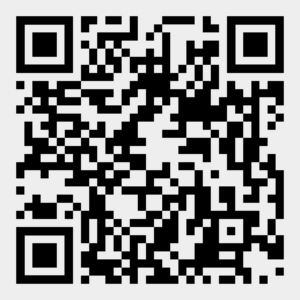
June 2015
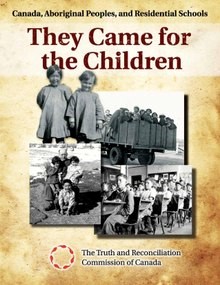
Truth & Reconciliation Commission of Canada Summary Report
The Truth and Reconciliation Commission of Canada’s (TRC, 2015b) Executive Summary report (Honouring the Truth, Reconciling for the Future) included the 94 Calls to Action (TRC, 2015a) and CBC News (2018) has an interactive update on the progress that has been made updated as of February 8, 2021 at Beyond 94: Truth and Reconciliation in Canada.
Of particular interest for the employment context is Call #92, which asks the corporate sector and their leadership to adopt the United Nations Declaration on the Rights of Indigenous People. The commission calls for meaningful consultation, long-term sustainable opportunities from economic development projects, as well as education and training for managers on the history of Indigenous people, intercultural competency, human rights, and anti-racism.
- TRC Progress Report Card (Assembly of First Nations, 2020)
- Honouring the Truth, Reconciling for the Future (TRC Executive Summary) (TRC, 2015b)
- Truth and Reconciliation Commission of Canada: Calls to Action (TRC, 2015a)
- Beyond 94: TRC in Canada (CBC News, 2018)
October 19, 2015
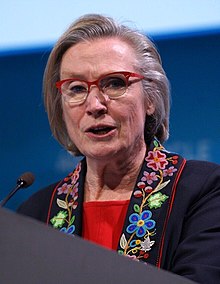
Carolyn Bennett Named New Minister for Indigenous & Northern Affairs
Justin Trudeau is elected Prime Minister of Canada and names Carolyn Bennett the new Minister for Indigenous and Northern Affairs. Minister Bennett is given a mandate letter directing her that her overarching goal will be to renew the relationship between Canada and Indigenous Peoples. This was to be a nation-to-nation relationship based on recognition, rights, respect, cooperation, and partnership.
December 8, 2015
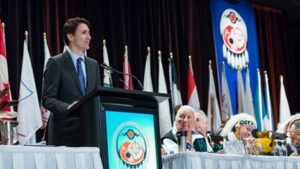
Trudeau Addresses the Assembly of First Nations
Trudeau replaces a “nation-to-nation” discussion with discussions with the Assembly of First Nations (AFN). However, the AFN does not represent the Nations because it is not a Nation and is funded almost 100% by the government.
Manuel expressed concern that the Liberals had made bold promises in the past but had attempted to enact policies like the 1969 White Paper, which, while it talked about justice for Indigenous peoples, actually involved their assimilation into the multiculturalism of Canada.
You can read more of the text of Trudeau’s speech on the official Prime Minister of Canada, Justin Trudeau (2015) webpage: “Prime Minister Justin Trudeau delivers remarks to the Assembly of First Nations Special Chiefs Assembly”
May 2016

Canada Adopts UNDRIP
Canada officially removes its objector status to UNDRIP, almost a decade after it was adopted by the General UN Assembly. By 2016, Australia, New Zealand, and the United States of America, who had also voted against the Declaration, had reversed their positions.
However, Natural Resources Minister Jim Carr announces that the Government of Canada is developing a ‘Canadian definition of UNDRIP,’ and Justice Minister Jody Wilson-Raybould (2016) states:
“Simplistic approaches such as adopting the United Nations declaration as being Canadian law are unworkable…”
June 4, 2019
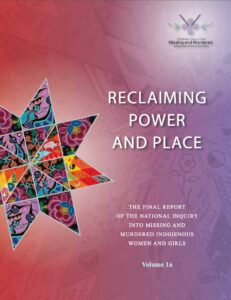
MMIWG2S Inquiry: Reclaiming Power and Place: The Final Report of the National Inquiry into Missing and Murdered Indigenous Women and Girls
The National Inquiry into Missing and Murdered Indigenous Women and Girls (MMIWG) formally released its final report (MMIWG, n.d.b) on June 3, including 231 Calls for Justice (MMIWG, 2019c) and the conclusion that Canada’s treatment of cases has amounted to a genocide.
- MMIWG (n.d.a) Home Page
- Timeline of Key Milestones (MMIWG, n.d.c)
- MMIWG (n.d.b) Final Report
- MMIWG (2019a) Final Report (Volume 1a) [PDF]
- MMIWG (2019b) Final Report (Volume 1b) [PDF]
A new framework of rights resulted from the inquiry: Right to Culture, Health, Security, and Justice.
November 2021
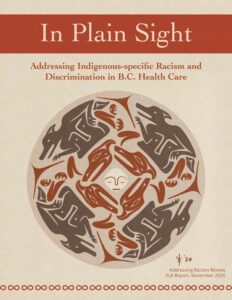
In Plain Sight: Response to Racism in Health Care
The report In Plain Sight: Addressing Indigenous-specific Racism and Discrimination in BC Health Care (Turpel-Lafond, 2020) was incepted when allegations of racism surfaced in June 2020. The report describes findings of widespread systemic racism against Indigenous peoples in the BC healthcare system. It calls for improved cultural safety in healthcare and increased Indigenous leadership within health services, regulators, and education. It also includes recommendations for steps to solve widespread racism that should improve the safety of Indigenous Peoples in healthcare. One of the major concerns is that racism has prevented Indigenous Peoples from accessing healthcare at the same levels as other Canadians, which has wide reaching impacts on the health and wellness for Indigenous Peoples.
- “Q&A with Mary Ellen Turpel-Lafond on Racism in BC Healthcare” (Marsden, 2021)
Back to Indigenous Inclusion in Employment
Media Attributions
- Figure O.1: The Reconciliation Manifesto: Recovering the Land, Rebuilding the Economy [Cover] by Arthur Manuel and Ronald Derrickson (2017) [cover design by Tyler Cleroux], via James Lorimer & Company Ltd., is used with permission.
- Figure O.2 [Group of female students [7th from left Josephine Gillis (nee Hamilton), 8th from left Eleanor Halcrow (nee Ross)]and a nun (Sister Antoine) in a classroom at Cross Lake Indian Residential School, Cross Lake, Manitoba, February 1940] by Canada. Dept. Indian and Northern Affairs (1940), via Library and Archives Canada, is in the public domain [copyright expired].
- Figure O.3 General Assembly on 14 September 2007 [Les Malezer, Chairperson of the Global Indigenous Caucus, and Victoria Tauli-Corpuz, Chair of the United Nations Permanent Forum on Indigenous Issue] in “United Nations Declaration on the Rights of Indigenous Peoples” by United Nations (2007) is used under the UN Photo Usage Guidelines.
- Figure O.4 Stephen Harper – World Economic Forum Annual Meeting 2012 by World Economic Forum (2012), via Flickr, is used under a CC BY-NC-SA 2.0 license.
- Figure O.5 Aboriginal War Veterans monument (close) by Padraic Ryan (2007), via Wikimedia Commons, is used under a CC BY-SA 3.0 license.
- Figure O.6 TRC Canada They Came for the Children by Truth and Reconciliation Commission of Canada (2012), via Wikimedia Commons, is in the public domain.
- Figure O.7 T.H. Carolyn Bennett, Minister of Crown-Indigenous Relations and Northern Affairs, Canada #ArcticCircle2017 by Arctic Circle (2017), via Flickr, is used under a CC BY 2.0 license.
- Figure O.8 Prime Minister Justin Trudeau delivers a speech to the Assembly of First Nations Special Chiefs Assembly by Office of the Prime Minister (2015), via Prime Minister of Canada, Justin Trudeau’s website, is used under the Prime Minister of Canada’s website’s Ownership & Usage.
- Figure O.9 Jody Wilson-Raybould (cropped) by Erich Saide (2014), via Wikimedia Commons, is used under a CC BY-SA 3.0 license.
- Figure O.10 Reclaiming power and place: The final report of the national inquiry into missing and murdered Indigenous women and girls (Volume 1a) [Cover] by National Inquiry into Missing and Murdered Indigenous Women and Girls (2019) [cover design includes work by Dee-Jay Monika Rumbolt (Snowbird), Saa-Ust Centre, and Christi Belcourt] is used with permission.
- Figure O.11 In Plain Sight: Addressing Indigenous-specific Racism and Discrimination in B.C. Health Care [Cover] by Mary Ellen Turpel-Lafond (2020) [cover design by Kwulasultun] is used with permission.
References
Aboriginal Affairs and Northern Development Canada. (2010, November 12). Canada’s statement of support on the united nations declaration on the rights of Indigenous Peoples. Government of Canada. https://web.archive.org/web/20111113155300/http://www.aadnc-aandc.gc.ca/eng/1309374239861
Assembly of First Nations. (2020). Progress on realizing the Truth and Reconciliation Commission’s calls to action. https://www.afn.ca/wp-content/uploads/2020/12/2020_TRC-Report-Card_ENG.pdf
Assembly of First Nations. (2022). Residential institutions. https://web.archive.org/web/20220930111109/https://www.afn.ca/residential-institutions/
Cable Public Affairs Channel. (2019, June 4). MMIWG releases final report, issues calls for justice to redress “genocide.” https://web.archive.org/web/20190702133109/https://www.cpac.ca/en/cpac-in-focus/mmiwg/
CBC News. (2008, May 16). A timeline of residential schools, the Truth and Reconciliation Commission. CBC. https://www.cbc.ca/news/canada/a-timeline-of-residential-schools-the-truth-and-reconciliation-commission-1.724434
CBC News. (2021, Jun 04). Your questions answered about Canada’s residential school system. CBC. https://www.cbc.ca/news/canada/canada-residential-schools-kamloops-faq-1.6051632
Crown-Indigenous Relations and Northern Affairs Canada. (2010). Statement of apology to former students of Indian Residential Schools. Government of Canada. https://www.rcaanc-cirnac.gc.ca/eng/1100100015644/1571589171655
George Gordon First Nation. (2022, October 4). In Wikipedia. https://en.wikipedia.org/w/index.php?title=George_Gordon_First_Nation&oldid=1114096502
The Globe and Mail. (2015, May 29). Canada attempted ‘cultural genocide’ on Aboriginals: Chief Justice Beverley McLachlin [Video]. YouTube. https://youtu.be/H1L2jOtJzZg?si=5JauT8_pWAkofctb
Indian Act. (2023, February 22). In Wikipedia. https://en.wikipedia.org/w/index.php?title=Indian_Act&oldid=1141002851
Manuel, A. & Derrickson, R. (2017). The Reconciliation Manifesto: Recovering the Land, Rebuilding the Economy. James Lorimer & Company Ltd.
Marsden, J. (2021, February 5). Q&A with Mary Ellen Turpel-Lafond on racism in BC healthcare. Emergency Care BC. https://emergencycarebc.ca/lounge/qa-with-mary-ellen-turpel-lafond-on-racism-in-bc-healthcare/
National Inquiry into Missing and Murdered Indigenous Women and Girls. (n.d.a). Home. https://www.mmiwg-ffada.ca/
National Inquiry into Missing and Murdered Indigenous Women and Girls. (n.d.b). Reclaiming power and place: The final report of the national inquiry into missing and murdered Indigenous women and girls. https://www.mmiwg-ffada.ca/final-report/
National Inquiry into Missing and Murdered Indigenous Women and Girls. (n.d.c). Timeline of key milestones. https://www.mmiwg-ffada.ca/timeline/
National Inquiry into Missing and Murdered Indigenous Women and Girls. (2019a). Reclaiming power and place: The final report of the national inquiry into missing and murdered Indigenous women and girls (Volume 1a) [PDF]. https://www.mmiwg-ffada.ca/wp-content/uploads/2019/06/Final_Report_Vol_1a-1.pdf
National Inquiry into Missing and Murdered Indigenous Women and Girls. (2019b). Reclaiming power and place: The final report of the national inquiry into missing and murdered Indigenous women and girls (Volume 1b) [PDF]. https://www.mmiwg-ffada.ca/wp-content/uploads/2019/06/Final_Report_Vol_1b.pdf
National Inquiry into Missing and Murdered Indigenous Women and Girls. (2019c). Calls for justice [PDF]. https://www.mmiwg-ffada.ca/wp-content/uploads/2019/06/Calls_for_Justice.pdf
Saskatchewan. (2023, February 28). In Wikipedia. https://en.wikipedia.org/w/index.php?title=Saskatchewan&oldid=1142135937
School District 27 Residential Schools and Reconciliation. (2014, December 6). Canadian federal government apology to First Nations [Video]. YouTube. https://youtu.be/xCpn1erz1y8?si=tcxZWqdaCTbRWq6v
Trudeau, J. (2015, December 8). Prime Minister Justin Trudeau delivers a speech to the Assembly of First Nations Special Chiefs Assembly [Speech transcript]. Office of the Prime Minister. https://www.pm.gc.ca/en/news/speeches/2015/12/08/prime-minister-justin-trudeau-delivers-speech-assembly-first-nations
Truth and Reconciliation Commission of Canada. (2015a). Calls to action [PDF]. https://www2.gov.bc.ca/assets/gov/british-columbians-our-governments/indigenous-people/aboriginal-peoples-documents/calls_to_action_english2.pdf
Truth and Reconciliation Commission of Canada. (2015b). Honouring the truth, reconciling for the future: Summary of the final report of the Truth and Reconciliation Commission of Canada (Catalogue no. IR4-7/2015E-PDF). Government of Canada. http://publications.gc.ca/pub?id=9.800288&sl=0
Turpel-Lafond, M. E. (2020). In plain sight: Addressing Indigenous-specific racism and discrimination in B.C. health care. [PDF]. Government of British Columbia. https://engage.gov.bc.ca/app/uploads/sites/613/2020/11/In-Plain-Sight-Summary-Report.pdf
Wilson-Raybauld, J. (2016, July 12). Assembly of First Nations – Annual general assembly [Speech transcript]. Government of Canada. https://www.canada.ca/en/department-justice/news/2016/07/assembly-of-first-nations-annual-general-assembly.html
Winnipeg Public Library. (n.d.). Residential schools: Introduction. In Winnipeg Public Library’s Residential Schools Info Guide. City of Winnipeg. https://guides.wpl.winnipeg.ca/residentialschools

